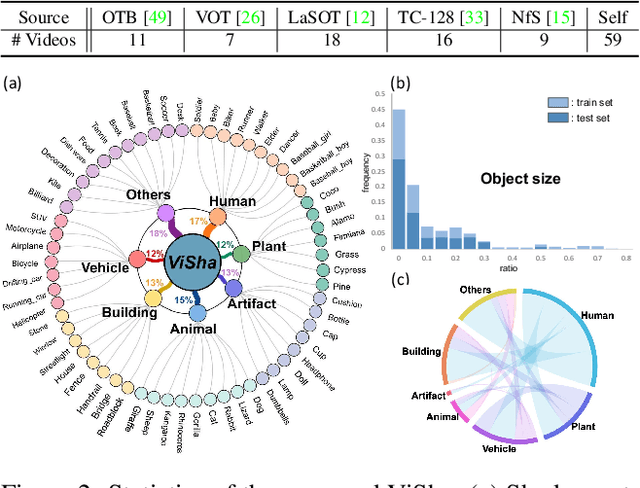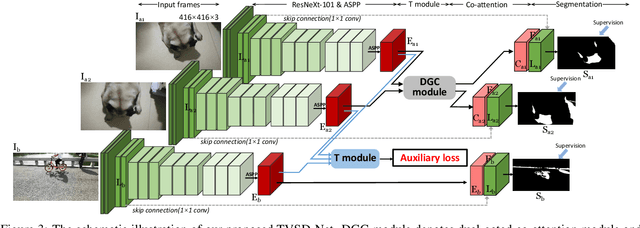Triple-cooperative Video Shadow Detection
Paper and Code
Mar 11, 2021



Shadow detection in a single image has received significant research interest in recent years. However, much fewer works have been explored in shadow detection over dynamic scenes. The bottleneck is the lack of a well-established dataset with high-quality annotations for video shadow detection. In this work, we collect a new video shadow detection dataset, which contains 120 videos with 11, 685 frames, covering 60 object categories, varying lengths, and different motion/lighting conditions. All the frames are annotated with a high-quality pixel-level shadow mask. To the best of our knowledge, this is the first learning-oriented dataset for video shadow detection. Furthermore, we develop a new baseline model, named triple-cooperative video shadow detection network (TVSD-Net). It utilizes triple parallel networks in a cooperative manner to learn discriminative representations at intra-video and inter-video levels. Within the network, a dual gated co-attention module is proposed to constrain features from neighboring frames in the same video, while an auxiliary similarity loss is introduced to mine semantic information between different videos. Finally, we conduct a comprehensive study on ViSha, evaluating 12 state-of-the-art models (including single image shadow detectors, video object segmentation, and saliency detection methods). Experiments demonstrate that our model outperforms SOTA competitors.
 Add to Chrome
Add to Chrome Add to Firefox
Add to Firefox Add to Edge
Add to Edge